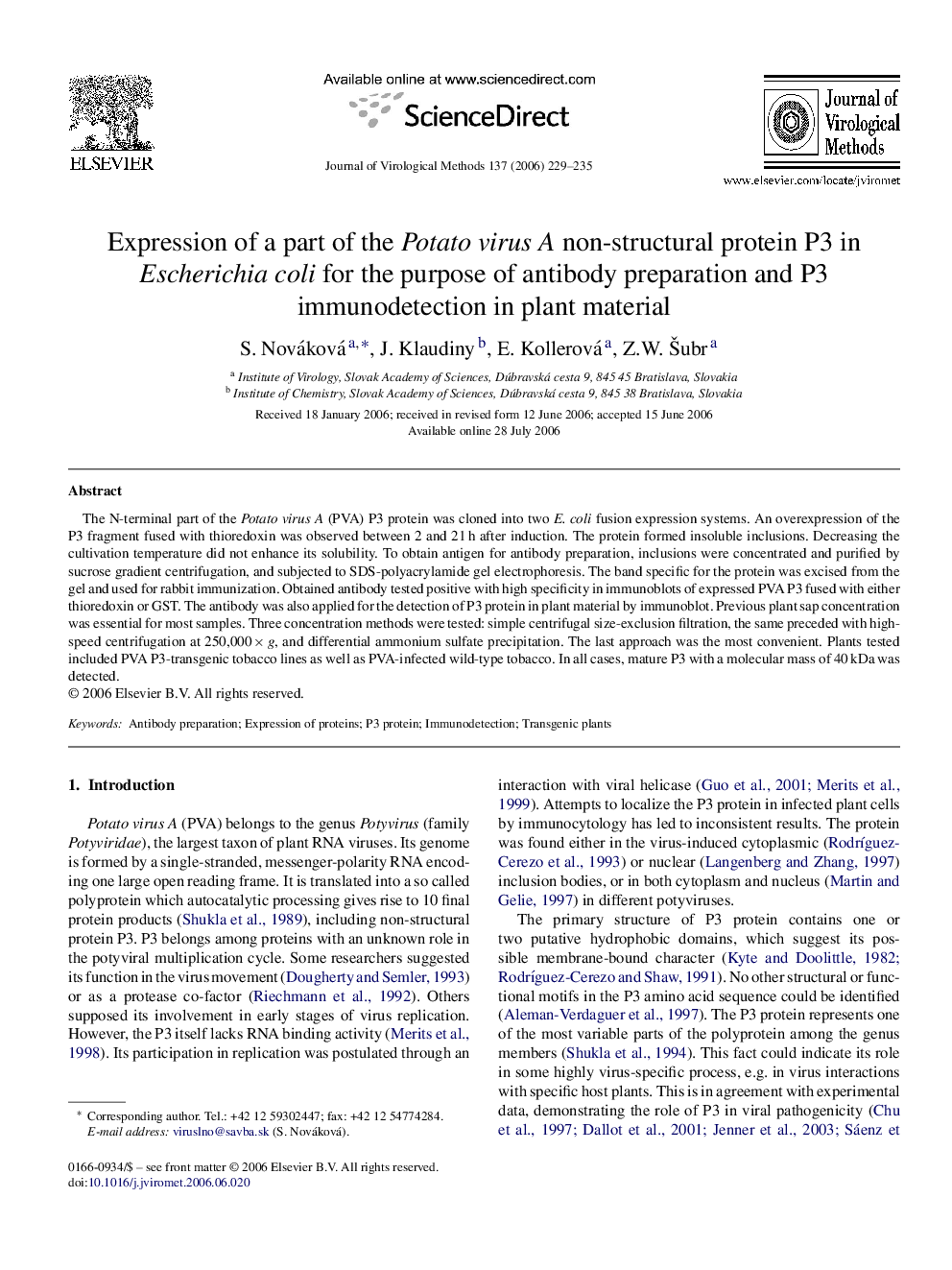| Article ID | Journal | Published Year | Pages | File Type |
|---|---|---|---|---|
| 3408391 | Journal of Virological Methods | 2006 | 7 Pages |
Abstract
The N-terminal part of the Potato virus A (PVA) P3 protein was cloned into two E. coli fusion expression systems. An overexpression of the P3 fragment fused with thioredoxin was observed between 2 and 21Â h after induction. The protein formed insoluble inclusions. Decreasing the cultivation temperature did not enhance its solubility. To obtain antigen for antibody preparation, inclusions were concentrated and purified by sucrose gradient centrifugation, and subjected to SDS-polyacrylamide gel electrophoresis. The band specific for the protein was excised from the gel and used for rabbit immunization. Obtained antibody tested positive with high specificity in immunoblots of expressed PVA P3 fused with either thioredoxin or GST. The antibody was also applied for the detection of P3 protein in plant material by immunoblot. Previous plant sap concentration was essential for most samples. Three concentration methods were tested: simple centrifugal size-exclusion filtration, the same preceded with high-speed centrifugation at 250,000Â ÃÂ g, and differential ammonium sulfate precipitation. The last approach was the most convenient. Plants tested included PVA P3-transgenic tobacco lines as well as PVA-infected wild-type tobacco. In all cases, mature P3 with a molecular mass of 40Â kDa was detected.
Keywords
Related Topics
Life Sciences
Immunology and Microbiology
Virology
Authors
S. Nováková, J. Klaudiny, E. Kollerová, Z.W. Å ubr,
